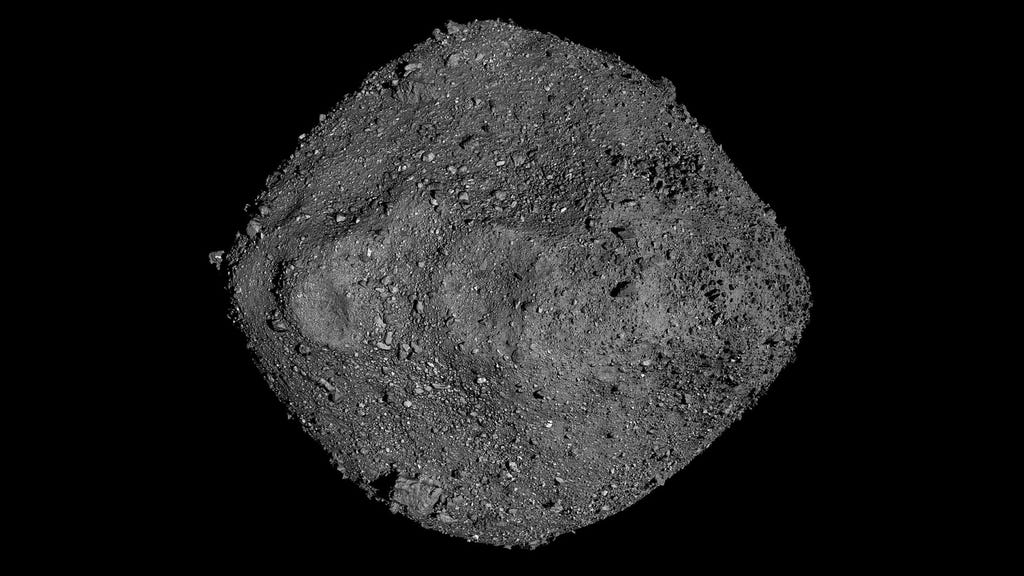The building blocks of life, despite life’s complexity, are surprisingly few. Our DNA and RNA are constructed from a mere five nucleotides, and the approximately 90,000 different proteins in the human body are composed of just 20 amino acids. Remarkably, a recent analysis of samples retrieved from the asteroid Bennu by the OSIRIS-REx spacecraft has revealed the presence of most of these fundamental components: five nucleotides and 14 amino acids. Published in Nature Astronomy, the study also indicates that Bennu is rich in various salts, further bolstering the hypothesis that asteroids played a crucial role in the origin of life on Earth.
The discovery of these life-essential molecules in extraterrestrial environments is not unprecedented, fueling the theory that asteroids seeded early Earth with the necessary ingredients for life to emerge. This theory posits that frequent asteroid impacts during Earth’s formative years delivered these molecules, setting the stage for the development of life. The findings from Bennu provide compelling evidence to support this hypothesis, demonstrating that these building blocks are not unique to Earth and exist elsewhere in our solar system. The presence of salts, also found on Bennu, further strengthens this argument as they are believed to have been vital for early life processes.
However, the Bennu analysis has also presented a perplexing anomaly that challenges the established narrative. A significant portion of the amino acids discovered on Bennu possess a ”mirror-image” structure compared to their terrestrial counterparts. Amino acids exist in two forms, designated as ”left-handed” and ”right-handed,” analogous to the relationship between our hands. Life on Earth predominantly utilizes left-handed amino acids, whereas the amino acids on Bennu exhibit a higher proportion of the right-handed variety. This unexpected finding casts doubt on the direct link between asteroid impacts and the origin of life on Earth, as it raises questions about the compatibility and incorporation of these right-handed amino acids into Earth’s predominantly left-handed biological systems.
This discrepancy in amino acid chirality, the property of handedness, has surprised scientists and prompted a reevaluation of the asteroid seeding theory. Daniel Galvin, an astrobiologist at NASA’s Goddard Space Flight Center, expressed his initial disappointment, feeling that two decades of research might have been in vain. However, he emphasized the inherent nature of scientific exploration—to learn and adapt to new discoveries. The prevalence of right-handed amino acids on Bennu opens up new avenues of investigation into the processes that led to the dominance of left-handed amino acids in terrestrial life. It also raises the intriguing possibility that other forms of life, based on right-handed amino acids, might exist elsewhere in the universe.
The journey of the OSIRIS-REx mission, from its launch in 2016 to its successful return in 2023, highlights the remarkable feats of space exploration. After a four-year voyage, OSIRIS-REx reached Bennu in 2018, where it meticulously collected samples of rock and dust before embarking on its return trip to Earth. The capsule containing these precious samples landed in the Utah desert, marking a significant milestone in our quest to understand the origins of life. The Bennu samples provide a unique window into the early solar system and offer valuable insights into the chemical inventory of asteroids, their potential role in delivering prebiotic molecules to Earth, and the intriguing puzzle of amino acid chirality.
The analysis of the Bennu samples is just the beginning of a long and complex process of scientific investigation. Further research is needed to fully understand the implications of these findings and reconcile the apparent contradiction between the presence of life’s building blocks on Bennu and the predominance of right-handed amino acids. This discovery underscores the importance of continued exploration and the constant refinement of our understanding of the universe and our place within it. The Bennu samples represent a treasure trove of information that will undoubtedly fuel further research and potentially reshape our understanding of the origins and evolution of life, not only on Earth but potentially beyond.














